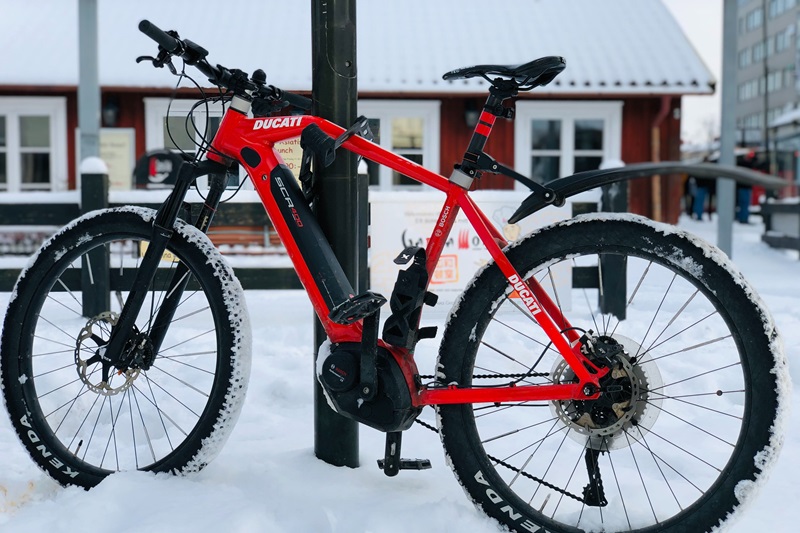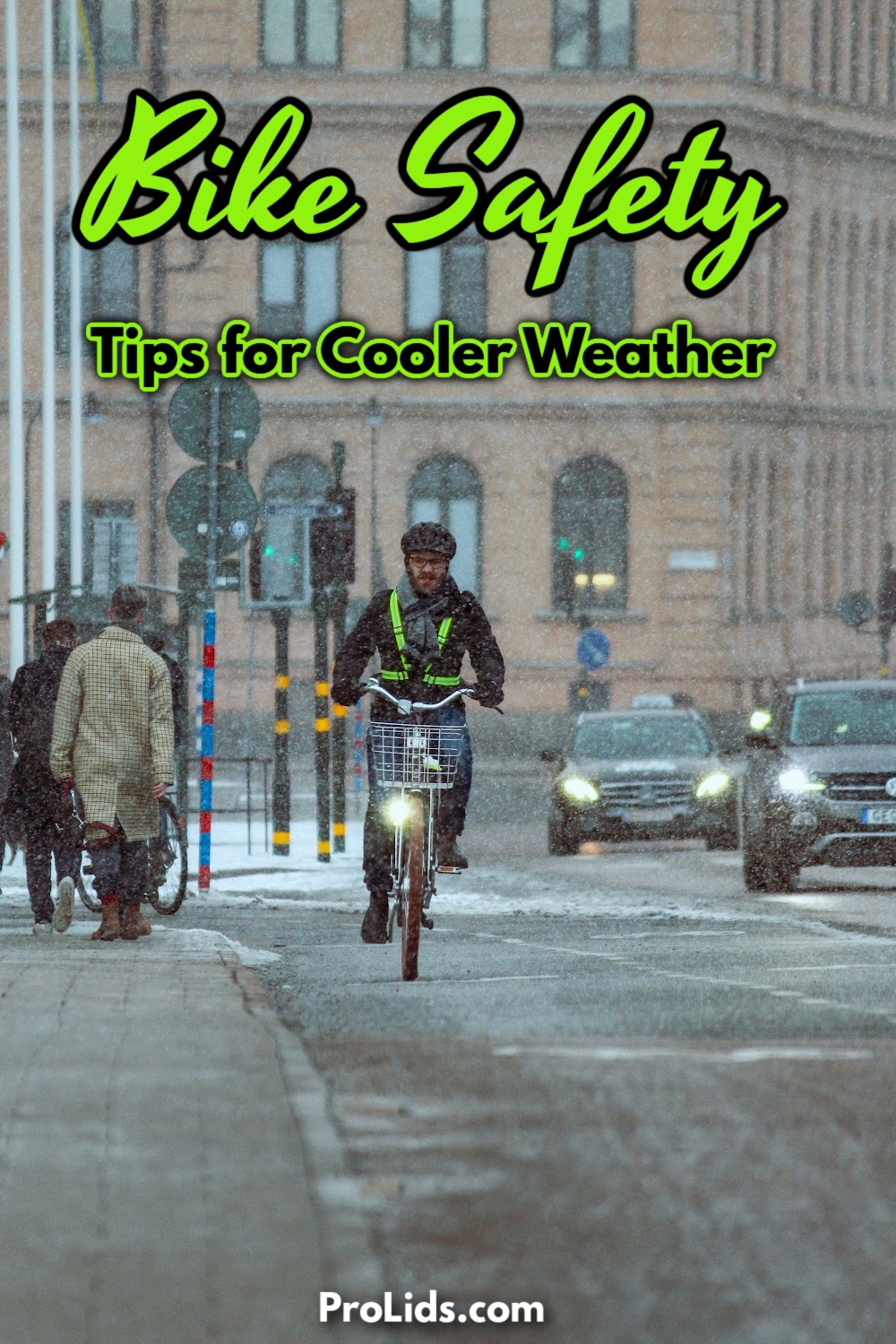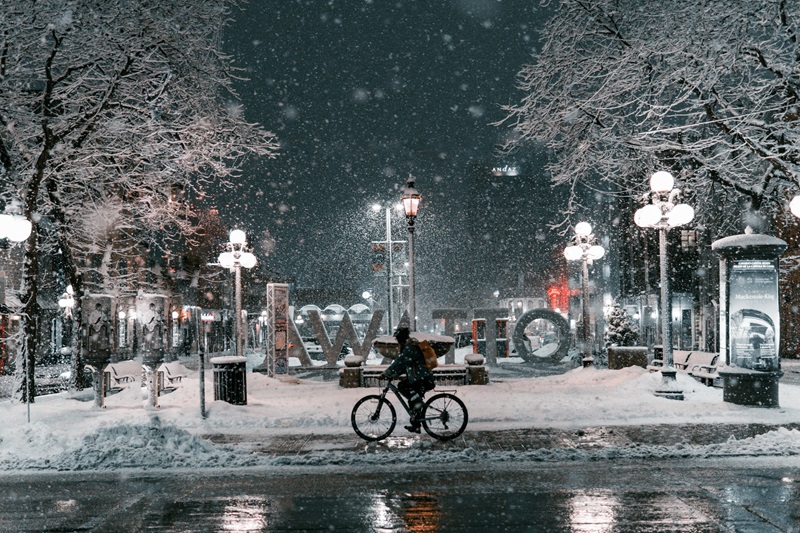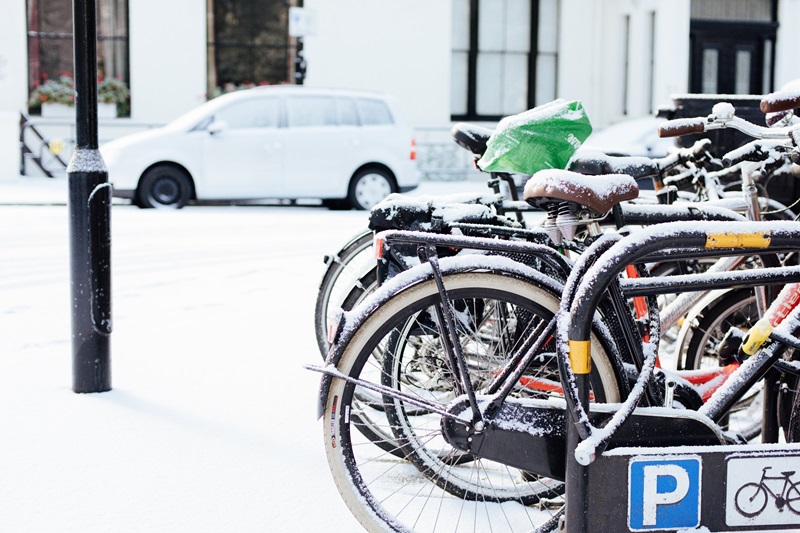Bike Safety Tips for Cooler Weather

The winter months bring darker days, colder nights, and other weather conditions that cause people to store away their bikes. However, it is unnecessary to store them away just because things get colder. We just need some bike safety tips for cooler weather.

Bike Safety Tips for Cooler Weather
Bike safety tips for cooler weather can help us all enjoy our bikes year-round, even when things get more than chilly. Winter brings a lot of things with it. We celebrate the holidays to kick things off, but the cold weather, snow, rain, cloudy skies, and darker days stick around through the new year.
This usually means outdoor activities get put away until spring. We have winter sports, but bike riding, rollerblading, and skateboarding take a break. Part of the problem is that it is simply too cold outside for us to want to spend time outdoors.
But the other part is safety. Cold weather doesn’t mean fewer cars on the road. In fact, it means quite the opposite. More drivers are putting up their bikes and grabbing their car keys to get around. But some safety tips can help us keep our bikes out of storage for winter.

Fitting the Bike for Winter
Days get darker earlier during the winter months. The first thing we need to do is make sure our bikes are prepared. Lights are almost a must in most cities. Some cities and states may even have laws about lights on bikes to help increase rider safety.
Every bike should have two lights, one on the front and one on the back. This will help ensure drivers can see you. Some laws may only require reflectors instead of functioning lights. Be sure to check with your local laws before purchasing any bike lights or reflectors.
Safety Vests for Bike Riders
Nighttime is easier for us all because we can simply use the lights on our bikes to be seen by drivers. But lights may be drowned out by the little light we get during the day. This is the perfect time to break out the reflective vests.
These vests reflect UV light, which makes it easier to stand out even on darker days. The vests are usually yellow but could also be white or orange. It is important to note that these reflective vests won’t do much at night.
The bright colors might make a difference, but that can just as easily be a brightly colored jacket or sweatshirt. The reflective vests only work correctly during daylight hours.

Retroreflective Vests and Accessories
Bike safety tips for cooler weather aren’t just about the cold but also about visibility. Visibility might just be more important than staying warm. However, reflective vests don’t work at night; they need UV light to be present. Retroreflective vests and accessories make all of the difference at night.
Retroreflective clothing reflects artificial light like that created by headlights. The light isn’t blinding or anything like that. Instead, the retroreflective items will become brighter and almost glow when met with light.
You can find retroreflective bands and patches that should be placed around the arms, legs, and across the back.
Bike Fenders
Another one of the bike safety tips for cooler weather is to invest in fenders. There’s no need to get a special bike or unique bike tires. Any bike can operate in winter weather just fine. Of course, a fat bike with fatter tires can make snow riding easier.
However, the tires will kick up some water, snow, or mud. The last thing we want is to have soggy pant bottoms just because our bike kicked up too much water while riding. Fenders are what prevent that from happening.
You can add front and rear fenders to just about any bike. The fenders will catch anything the tires kick up so that nothing ends up on your clothing.

Tire Pressure
Did you know that air condenses in the cold? You may have heard that car tires need to be checked regularly during winter months. This is because the air in the tires condenses which means the air that once filled the tire is not enough to fill the tire anymore.
The same can be said for bike tires. Low tire pressure on bikes could lead to pinch flats and sloppy steering. We can avoid that by checking our bike tire pressure and keeping it in the mid to low end of the manufacturer’s recommended pressure range.
Dressed for the Occasion
Everyone has their own opinion on what is considered to be too cold. However, the important thing is that you are comfortable outdoors in colder weather. This could mean wearing layers on top of layers. But bike safety is all about protecting our heads from a crash.
We will want to wear beanies or hats to help keep our heads warm, but we also need a helmet. Unfortunately, wearing a hat or a beanie under a helmet compromises the helmet’s protection levels. Luckily, the ProLids Winter Helmet comes with a warming liner as part of the helmet.
The liner being part of the helmet means the protection is not compromised, and the helmet’s fit offers top levels of protection while keeping your head warm.
